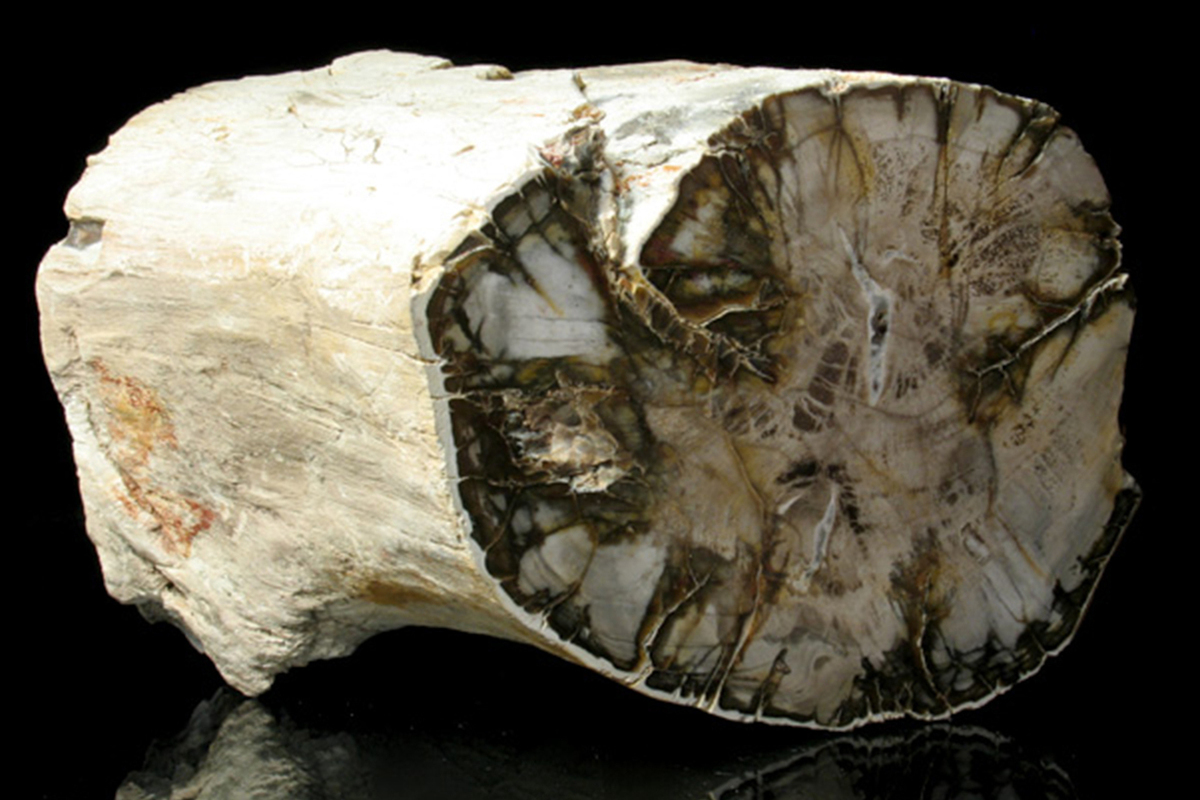World’s oldest fossilized trees, 390 million years old, discovered
[ad_1]

The world’s oldest fossilized trees have been discovered along the coast of Devon and Somerset in the UK. The age of the find is estimated at hundreds of millions of years.
The world’s oldest fossilized trees, 390 million years old, have been found in high sandstone cliffs along the coast of Devon and Somerset, writes The Guardian.
These fossilized trees are the oldest ever found, some 4 million years older than the previous record holder, which was found in New York State.
The fossilized trees, known as Calamophyton, would have resembled palm trees if seen from afar, but were the “prototype” of the types of trees we are familiar with today. Instead of a solid tree, their trunks were thin and hollow in the center, and they reached a height of 2 to 4 meters. They also lacked leaves; their branches were covered with hundreds of twig-like structures.
The fossils were found near Minehead, on the south bank of the Bristol Channel.
“It was quite a strange forest – unlike any forest you would see today,” comments Professor Neil Davies, a geologist at the University of Cambridge and first author of the study. “There was no undergrowth to speak of and the grass had not yet appeared, but there were a lot of branches that had fallen from these densely planted trees, which had a big impact on the landscape.”
Scientists had previously suggested there were no significant plant fossils along this stretch of English coastline, but the find shows how ancient trees helped shape landscapes and stabilize riverbanks and coastlines hundreds of millions of years ago. The results were published in the Journal of the Geological Society.
The forest dates back to the Devonian period, between 358 and 419 million years ago, when life began its first major expansion on land. By the end of this period, the first seed-bearing plants appeared and the earliest land animals, mainly arthropods, were firmly established, writes The Guardian.
“The Devonian period fundamentally changed life on Earth,” says Professor Davis. “It also changed the way water and land interacted with each other, as trees and other plants helped stabilize sediment through their root systems, but little is known about the earliest forests.”
The fossil wood identified by the researchers was found in the Executioner Sandstone Formation, along the coast of north Devon and west Somerset. During the Devonian period, the region was not annexed to the rest of England, but instead lay further south, connecting to parts of Germany and Belgium where similar Devonian fossils were found.
“When I first saw photographs of tree trunks, I immediately knew what they were, based on 30 years of studying this type of tree around the world,” said Dr Christopher Berry, a palaeobotanist at Cardiff University and co-author of the study. “It was amazing to see them so close to home. But the most revealing understanding comes when you first see these trees in the place where they grew. This is our first opportunity to look directly at the ecology of this earliest forest type, interpret the environment in which Calamophyton trees grew, and assess their influence on the sedimentary system.”
Field work was carried out along the highest sea cliffs in England, some of which can only be reached by boat, and revealed that this sandstone formation is in fact rich in fossil plants from the Devonian period.
At that time, this place was a semi-arid plain, crossed by small river channels running down from the mountains to the northwest. The appearance of the first dense groups of trees would have influenced the way rivers flowed across the landscape, the researchers say. “People sometimes think British rocks have been studied enough, but this shows that re-examining them can lead to important new discoveries,” Davis said.
[ad_2]
Source link








